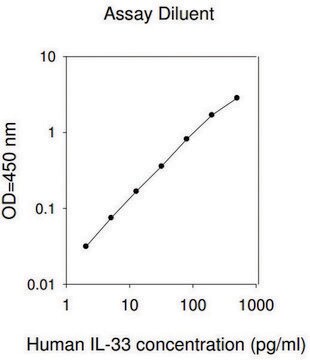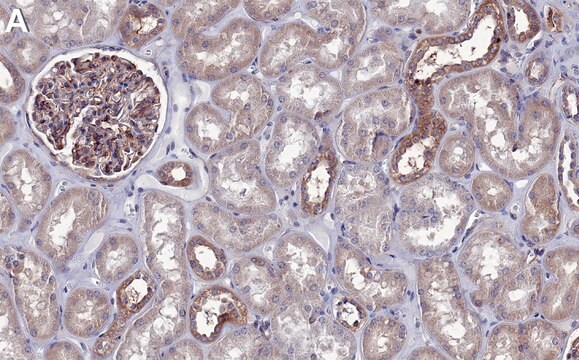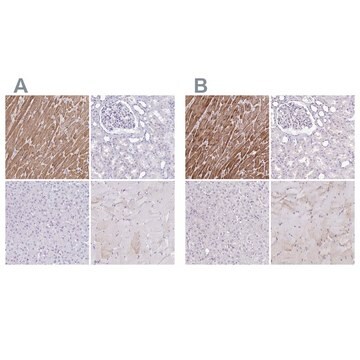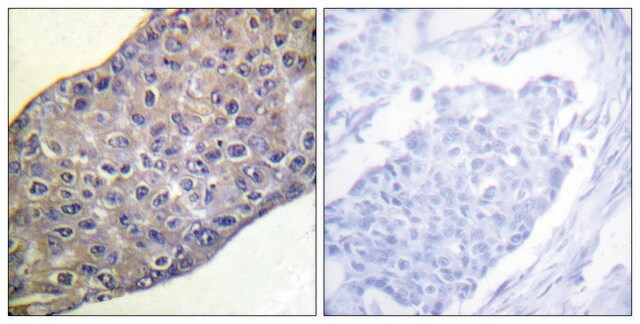PLA0208
Rabbit anti-BMI1 Antibody, Affinity Purified
Powered by Bethyl Laboratories, Inc.
Sinônimo(s):
B lymphoma Mo-MLV insertion region 1 homolog, B lymphoma Mo-MLV insertion region 1 homolog (mouse), BMI1 polycomb ring finger oncogene, BMI1 polycomb ring finger proto-oncogene, FLVI2/BMI1, PCGF4, RNF51, flvi-2/bmi-1, murine leukemia viral (bmi-1) oncogene homolog, polycomb group RING finger protein 4, polycomb group protein Bmi1, polycomb group ring finger 4, ring finger protein 51
About This Item
Produtos recomendados
fonte biológica
rabbit
Nível de qualidade
forma do anticorpo
affinity purified immunoglobulin
tipo de produto de anticorpo
primary antibodies
grau
Powered by Bethyl Laboratories, Inc.
reatividade de espécies
mouse, human
técnica(s)
immunohistochemistry: 1:500- 1:2,000
immunoprecipitation (IP): 2-5 μg/mg
western blot: 1:2,000- 1:10,000
nº de adesão
NP_005171.4
nº de adesão UniProt
Condições de expedição
wet ice
temperatura de armazenamento
2-8°C
Informações sobre genes
rabbit ... BMI1(648)
Imunogênio
forma física
Outras notas
Exoneração de responsabilidade
Não está encontrando o produto certo?
Experimente o nosso Ferramenta de seleção de produtos.
Código de classe de armazenamento
12 - Non Combustible Liquids
Classe de risco de água (WGK)
nwg
Ponto de fulgor (°F)
Not applicable
Ponto de fulgor (°C)
Not applicable
Certificados de análise (COA)
Busque Certificados de análise (COA) digitando o Número do Lote do produto. Os números de lote e remessa podem ser encontrados no rótulo de um produto após a palavra “Lot” ou “Batch”.
Já possui este produto?
Encontre a documentação dos produtos que você adquiriu recentemente na biblioteca de documentos.
Nossa equipe de cientistas tem experiência em todas as áreas de pesquisa, incluindo Life Sciences, ciência de materiais, síntese química, cromatografia, química analítica e muitas outras.
Entre em contato com a assistência técnica








